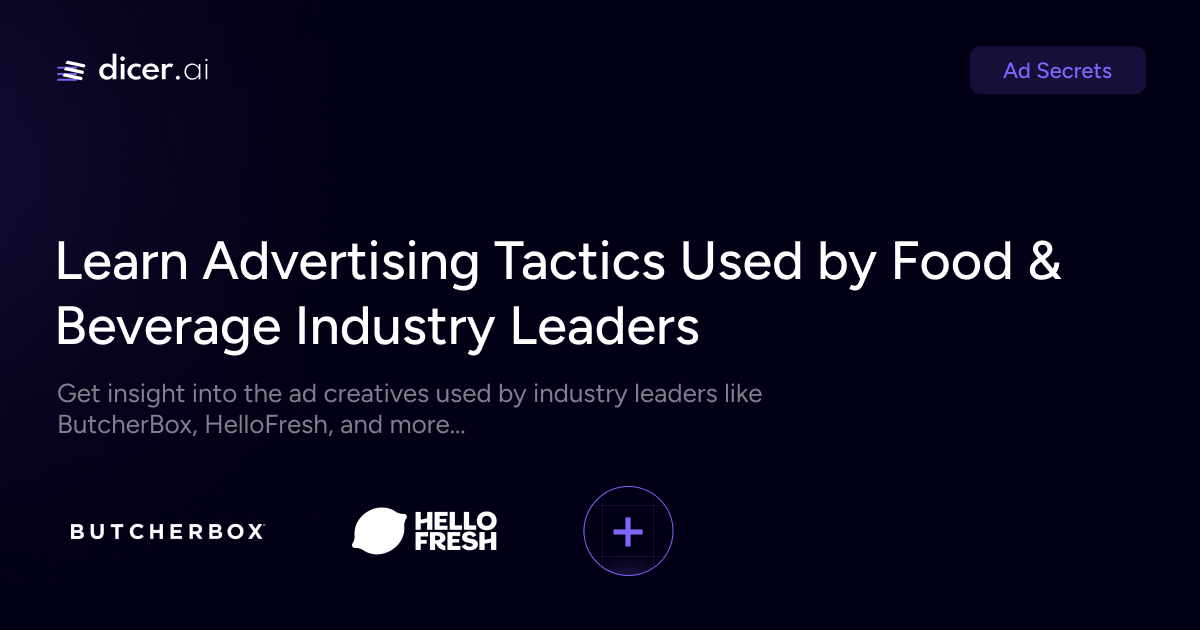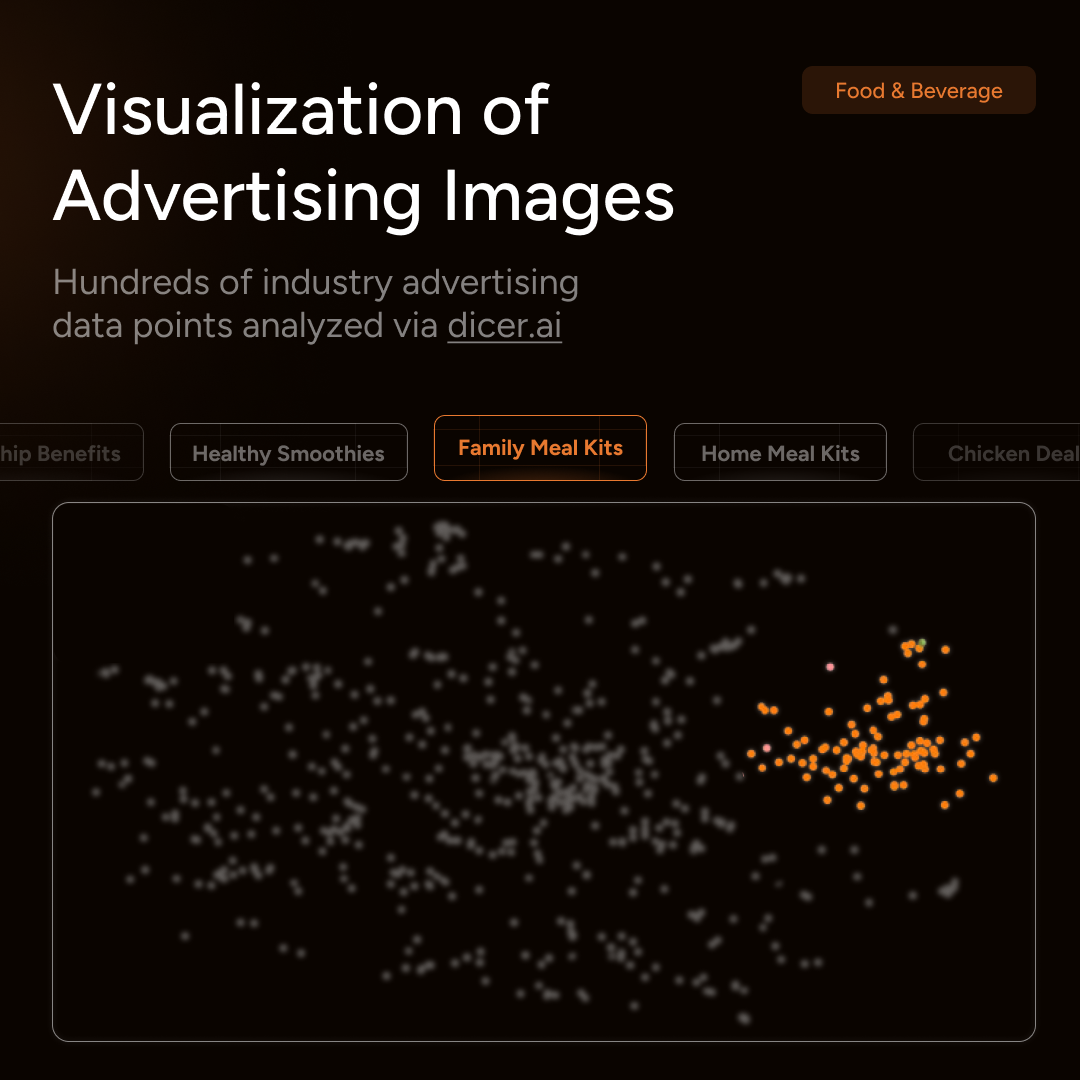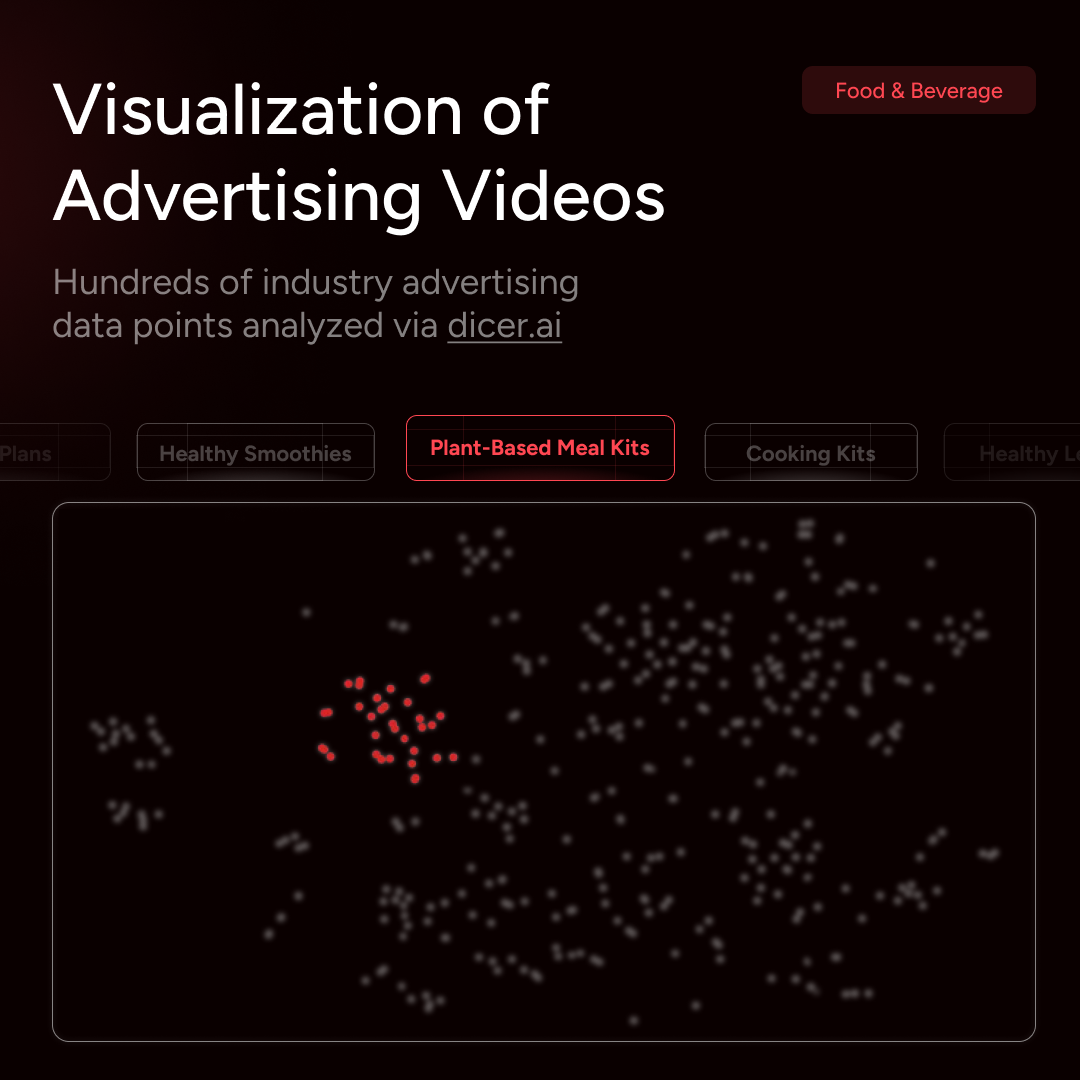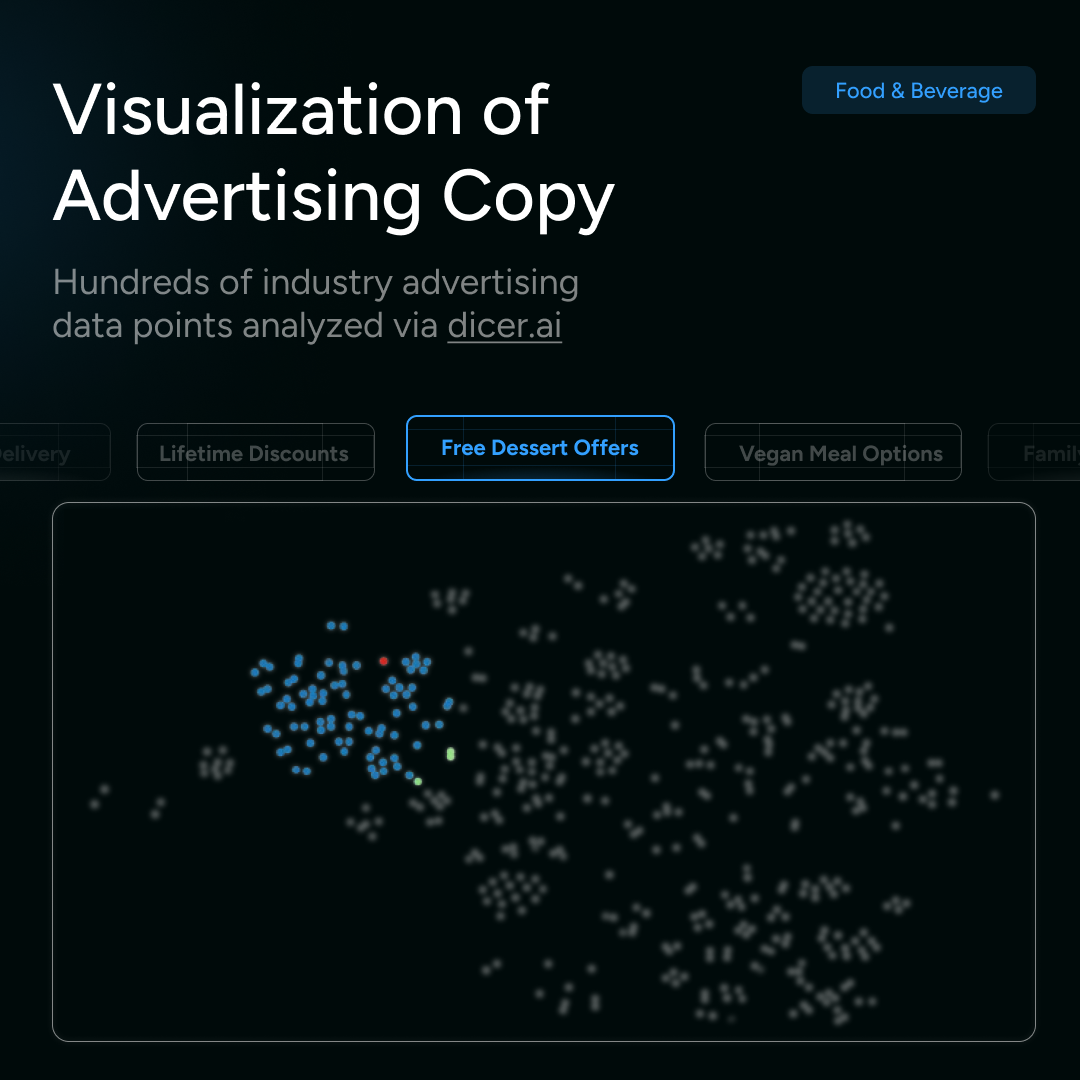Learn Advertising Tactics Used by Food & Beverage Industry Leaders
Get insight into the ad creatives used by industry leaders like ButcherBox, HelloFresh, and more…

The food and beverage industry continues to be one of the most competitive markets, especially with at-home delivery meal kits flooding the market alongside companies trying to differentiate themselves from each other with twists on their products.
At Dicer.ai we’ve analyzed hundreds of industry data points to cut through the noise and see what’s working for brands when it comes to paid digital advertising. Our data in this post includes over 1,900 ad assets from 15 of the top food and beverage companies!
We’ve compiled three of the top major categories: image, video, and copy trends – to find effective strategies industry leaders are implementing that you can learn from.
Breaking Down Image Trends

Across all 15 analyzed food and beverage companies, the visual use of Family Meal Kits in images was the most common visual used in ad asset images. Below you'll find key common strategies used across ad images.
One of the biggest trends in food and beverage industry marketing is using images that make an immediate visual impact. These visuals use stark, high-contrast backgrounds and integrate bold textual overlays, which engage the viewer immediately. The goal here, of course, is to ensure that the marketers’ message is received accurately and promptly through the design.
Marketers in the industry also focus their content heavily on the health benefits and ethical sourcing of their products, using keywords such as “free-range” and “organic” to communicate these benefits and align with consumer preferences.
The meal-kit delivery service sector also promotes the convenience of the subscription service they offer, which is one of their main selling points. And they try to initiate immediate action from the viewer by providing limited-time offers that spark a sense of urgency.
Insight Into Video Trends

In video marketing, companies in the industry emphasize the health and nutritional benefits of their service. To do so, they highlight the specific ingredients that they use — and where they’re sourced from — as well as the specific health benefits that they provide.
The visuals that accompany this message are vibrant shots of the fresh ingredients and detailed nutritional information, accompanied by direct messaging about these health benefits. They use phrases such as “packed with essential nutrients” or “no artificial sugars” to communicate these benefits directly in a way that’s easily understood by the viewer.
Convenience and ease of preparation fall next in trends for video marketing, with many advertisements highlighting how easy it is to cook their meals. They use phrases such as “heat and eat” and “ready in minutes,” which helps to ease viewers’ concerns about meal preparation.
The video frames that support these messages include the plan’s simple steps for preparation, for instance. Companies such as Factor Meals emphasize how their chef-prepared meals are ready in less than two minutes, while Mila focuses on how their plant-based meals are “ready in nine minutes.”
The third trend in this category is an emphasis on the quality and tradition of meat products used. Companies such as Omaha Steaks, D’Artagnan and ButcherBox use rich, warm color palettes to highlight the excellence and heritage of their products. It helps to supplement the messaging that the meats they provide are premium in nature, suggesting higher standards that are both gourmet and luxurious.
Dissecting Copy Trends

One of the biggest trends in food and beverage marketing when it comes to the copy used is highlighting the convenience and simplicity of meal preparation. The ads observed emphasize things such as pre-prepped ingredients, minimal required effort and fast cooking times.
Companies such as Home Chef focus on “oven-ready meals.” Gobble promotes “15-minute meal kits.” And Blue Apron mentions “simple to make” meals. This message resonates very well with viewers who are living fast-paced lives, with less and less time to fit in full meal preparation.
At the same time, these companies ensure that a big part of their message is focused on health and wellness. These meal kits, for instance, are not meant to be fast-food equivalents, but rather an alternative to scratch home cooking that is just as healthy and rewarding to make.
Many of the ads focus on the different health benefits as well as the options such as food for Keto diets, plant-based choices and overall high-quality ingredients. The ads integrate phrases such as “plant-based,” “grass-fed” and “no added hormones” to hammer this message home.
The final major trend in copy is the direct-to-consumer convenience aspect of the plans. The messaging here revolves around the hassle-free aspect of the plans, with no need to plan out meals, shop for ingredients and then prepare the meal.
The ads use phrases such as “free shipping,” “delivered to your door” and “recurring schedule” to emphasize just how convenient they are. Consumers today are conditioned to value convenience, and direct-to-consumer models such as these are catering to this by providing easy access to their products.
Gain Valuable Marketing Insights with Dicer.ai
To stand out from the crowd, your company needs to have a well-thought-out and designed marketing program, driven by keen insights and data in your industry to stand out from the crowd.
With Dicer.ai, you can harness superhuman analysis with the experience and data-driven clarity available on the platform. Our AI campaign and creative intelligence platform allows you to assess thousands of points across your campaigns and creatives, improving your marketing efforts in the process.
Looking to onboard Dicer.ai or just want to learn more?
